
About us
ABOUT TV AND RADIO
Azerbaijan Television and Radio Broadcasting Closed Joint-Stock Company is the oldest television company in our country.
Azerbaijan Radio was established on November 6, 1926, and Azerbaijan Television – on February 14, 1956. Azerbaijan Television has played the most significant role in the formation of television network of country. This PRIMACY proved itself in the activity of all television channels, created in the period of independence.
On March 23, 1956, Azerbaijan Television and Radio Broadcasting Closed Joint-Stock Company was established by the decree of the President of the Republic of Azerbaijan No 213.
Azerbaijan Television has a very wide audience. At present, Azerbaijan Television programmes can be watched not only in every city, village, and remote locations of our country, but also in many countries of the world. Azerbaijan Television has its own correspondents in Turkey, Russia, Ukraine, Iran, Canada, Uzbekistan, and Kazakhstan. Since 2013 Arab countries and North Africa Bureau has begun its activities.
Since February 2004 a better broadcasting quality of Azerbaijan Television has been provided in European countries. As a result of installation of a digital TV station – Up-link in the television tower complex by specialists of the Teleradio Production Association, Azerbaijan Television programmes began to be broadcasted to Europe via Hot Bird and SESAT satellites, to North America via Galaxy 25, and to Asia via Turksat 1C. In 2007 Azerbaijan Television was awarded the European Quality medal for the high-quality technical broadcasting to Europe.
Azerbaijan Teleradio is headed by a team of professional creative staff and managers.
It is no coincidence that on the eve of a half-century anniversary of Azerbaijan Television and Radio Broadcasting, many Teleradio journalists and directors were presented with various state awards – honorary titles, orders and medals.
Currently, on Azerbaijan Television, talk shows on various themes, autobiographical and travel programmes, music and entertainment programmes, television plays, documentaries and feature films are broadcast in HD format.
The activity of Azerbaijan Television can be divided into two stages: pre-independence and subsequent periods.
The beginning
Azerbaijan Television started its activity on February 14, 1956, just 30 years after radio. It coincided with the emergence of a new era of transparency in the Soviet society, which was liberated from the Stalinist regime.
Construction of the building for the Baku Television Center began in 1954. The spot for construction was selected in one of the highest places in Baku at 1 Mehdi Huseyn Street. The building of the telecentre that was built by Azerbaijani builders and specialists, jointly with the colleagues from Moscow and Leningrad was commissioned in the end of 1955. Until February 1956 pilot programmes of the Baku studio had been broadcasted from time to time.
On the first day of broadcasting, a young actress Nadjiba Melikova, who will later become a well-known artist of Azerbaijan, appeared on the screen. Having started with the phrase "Baku presents!”, she congratulated the audience on the launch of the television, then the feature film Bakhtiyar was shown.
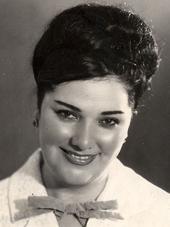 The Baku studio used to go on the air with a two-hour programme first two times a week, then – three.
The Baku studio used to go on the air with a two-hour programme first two times a week, then – three.
For the absence of television professionals, in the early days, radio, newspaper and theater staff were invited for the job. There was no idea about programming, networking and modeling on television at that time. For this reason this new mass media acted as image relay. Television workers gathered every day to decide what to show to the audience. The choice was not rich: concerts of classical and pop music, feature films, theater performances, interviews on socio-political issues, performances of leading workers, performances of advanced laborers were shown, and the announcer read short 15-minute news articles.
Since 1957 Azerbaijan Television had started broadcasting 5 times a week, and the daily volume had been increased to 2 hours 20 minutes.
In 1962 the volume of daily transmissions increased to 7 hours. Since 1970 the volume of daily programmes of Azerbaijan Television had increased to 10 hours, and in the 80s – to 18 hours. From January 2005 television has switched to a 24-hour transmission.
Television status
In 1956 Baku Television Studio and the Radio Information Enterprise worked separately. In October 1957 Television was exempted from subordination to the Ministry of Culture and, having joined Radio Information Department, was renamed the State Committee of Television and Radio Broadcasting under the Council of Ministers of the Republic.
In 1970 this organization received the status of the State Committee for Television and Radio Broadcasting.
In 1991 the committee became a company.
Since June 2003 Nakhchivan Television, which is part of the Azerbaijan State Television, had begun independent activities.
Since 2005 the company has become Closed Joint-Stock Company Azerbaijan Television and Radio Broadcasting by President Ilham Aliyev's decree.
Chairmen
In 1956 Baku Television Studio was headed by Anvar Alibeyli, and Radio Information Department – by Israfil Nazarov.
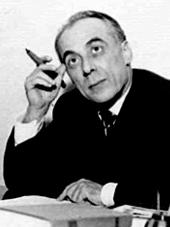 On May 16, 1957, Teymur Aliyev was appointed the chairman of the State Committee for Television and Radio Broadcasting, and Nasir Imanguliyev – the first deputy chairman.
On May 16, 1957, Teymur Aliyev was appointed the chairman of the State Committee for Television and Radio Broadcasting, and Nasir Imanguliyev – the first deputy chairman.
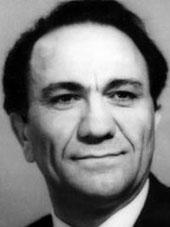 In 1965 Teymur Aliyev was appointed for position in the Central Committee of the Communist Party of Azerbaijan, and, consequently, Anvar Alibeyli became the chairman of Television and Radio Broadcasting Committee.
In 1965 Teymur Aliyev was appointed for position in the Central Committee of the Communist Party of Azerbaijan, and, consequently, Anvar Alibeyli became the chairman of Television and Radio Broadcasting Committee.
Imran Mirzoyev replaced Anvar Alibeyli, who suddenly died in 1969. His presidency had lasted 11 months.
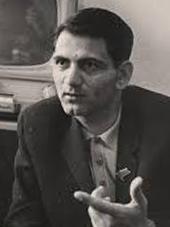 In January 1970 Gurban Yusifzadeh, the head of the department of Baku Higher Party School, was appointed as chairman of the Teleradio Committee. He had held this position until 1982.
In January 1970 Gurban Yusifzadeh, the head of the department of Baku Higher Party School, was appointed as chairman of the Teleradio Committee. He had held this position until 1982.
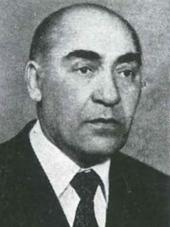 In 1983 Elshad Guliyev was appointed to the post of chairman. After the events of January 20, 1990, E. Guliyev resigned.
In 1983 Elshad Guliyev was appointed to the post of chairman. After the events of January 20, 1990, E. Guliyev resigned.
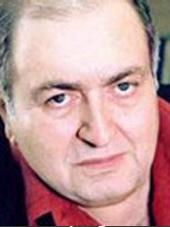 On January 27, 1990, he was replaced by Geysar Khalilov. Geysar Khalilov had held this position until November 1991.
On January 27, 1990, he was replaced by Geysar Khalilov. Geysar Khalilov had held this position until November 1991.
From November 1991 to March 6, 1992, Mammad Murad was the head of the Television and Radio Company.
On March 7, 1992, Elshad Guliyev was again appointed chairman of the Teleradio Company, and had headed it until May 14, 1992.
On May 14, 1992, having returned to power for one day, Ayaz Mutallibov again returned Mammad Murad to the management of the company, but Mammad Murad was also able to stay in this post for only one day.
The television company Popular Front, which came to power in mid-May 1992, appointed the poet Mammad Ismayil as chairman. On September 5, 1996, he was suspended.
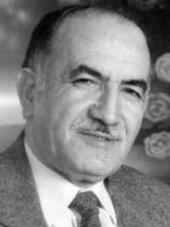 In 1993 Babek Mammadov replaced Mammad Ismayil. On September 5, 1996, Babek Mammadov was dismissed.
In 1993 Babek Mammadov replaced Mammad Ismayil. On September 5, 1996, Babek Mammadov was dismissed.
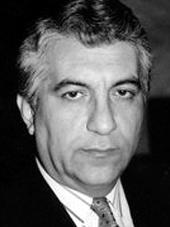 In September 1996 Nizami Khudiyev was appointed chairman of the Teleradio Company. In June 2006 by the decree of President Ilham Aliyev, N. Khudiyev was relieved of the post of Chairman of the Closed Joint-Stock Company Azerbaijan Television and Radio Broadcasting.
In September 1996 Nizami Khudiyev was appointed chairman of the Teleradio Company. In June 2006 by the decree of President Ilham Aliyev, N. Khudiyev was relieved of the post of Chairman of the Closed Joint-Stock Company Azerbaijan Television and Radio Broadcasting.
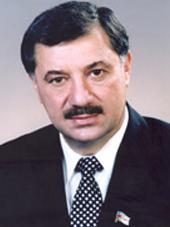 On August 16, 2006, Arif Alyshanov was appointed to the post of chairman in CJSC Azerbaijan Television and Radio Broadcasting by the decree of President Ilham Aliyev.
On August 16, 2006, Arif Alyshanov was appointed to the post of chairman in CJSC Azerbaijan Television and Radio Broadcasting by the decree of President Ilham Aliyev.
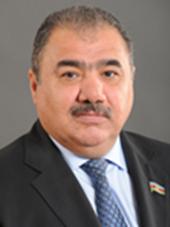 By the decree of President Ilham Aliyev dated January 16, 2019, A. Alyshanov was deprived of position.
By the decree of President Ilham Aliyev dated January 16, 2019, A. Alyshanov was deprived of position.
Currently, the post of chairman of CJSC Azerbaijan Television and Radio Broadcasting is performed by the famous journalist Rovshan Mammadov.
The first announcers
In May 1956 the first announcers appeared on the screen. Among them were Tamara Gozalova, Naila Mekhdibaeva, Sevda Ganizadeh, Sarah Manafova, Rena Nasirova, Rakhshan Aslanova, Sima Hasiyeva, Nizami Mammadov.
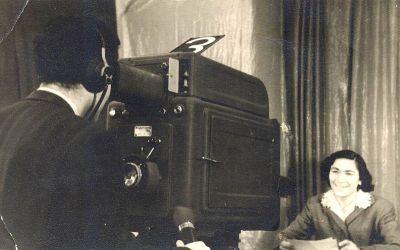 Later, on television there new generation of announcers appeared: Rosa Tagiyeva, Rafig Huseynov, Opheliya Sanani, Shargiya Huseynova, Sabir Aleskerov, Hijran Huseynov, Hagiget Askerova, Natavan Hajieva, Tamilla Alekperova, Davud Akhmedov, Gyulshan Akberova, Nargiz Jalilova,Ulkar Guliyeva, Aygul Garadagly, Nailya Islamzadeh, Sevda Agazadeh, Dilyara Salimova, Kamala Guseynova, Rafiq Gashimov, Nailya Babayeva, Nasimi Nabizadeh, Afag Akhmedova, Zamira Dadasheva, Aynura Mehtiyeva, Aynur Mammadzadeh..
Later, on television there new generation of announcers appeared: Rosa Tagiyeva, Rafig Huseynov, Opheliya Sanani, Shargiya Huseynova, Sabir Aleskerov, Hijran Huseynov, Hagiget Askerova, Natavan Hajieva, Tamilla Alekperova, Davud Akhmedov, Gyulshan Akberova, Nargiz Jalilova,Ulkar Guliyeva, Aygul Garadagly, Nailya Islamzadeh, Sevda Agazadeh, Dilyara Salimova, Kamala Guseynova, Rafiq Gashimov, Nailya Babayeva, Nasimi Nabizadeh, Afag Akhmedova, Zamira Dadasheva, Aynura Mehtiyeva, Aynur Mammadzadeh..
Telecentre
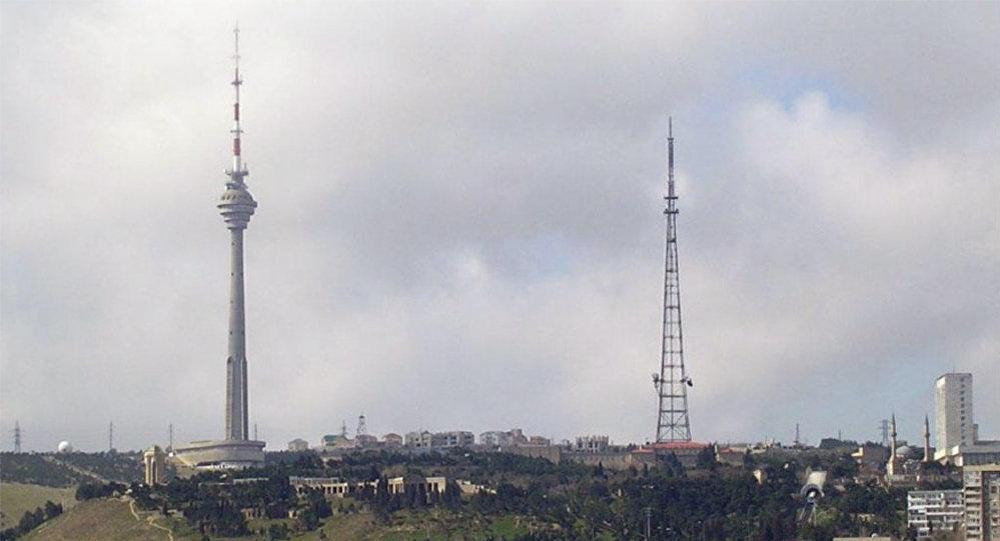 By 1956 the construction of the television tower had not been completed yet. Therefore, the transmitter of the Baku studio was installed on a regular 44-meter oil well.
By 1956 the construction of the television tower had not been completed yet. Therefore, the transmitter of the Baku studio was installed on a regular 44-meter oil well.
The tower with a height of 180 meters was commissioned in 1957. At that time, the programmes, broadcasted by the tower, could be watched only in and around the capital.
With the launch of the Baku-Aghstafa radiorelearing line in 1960, television retransmitters started operating at Goychay-Ganja-Aghstafa stations. As a result, it was possible to watch television in many urban centers and residential areas of Azerbaijan.
The launch of powerful television stations in Ganja, Goychay, and Shusha in 1961 enabled Baku to broadcast its programmes easily in Hanlar, Goranboy, Yevlah, Mingachevir, Aghjabadi and Nagorno-Karabakh.
Due to the small television station established in Nakhchivan in January 1962, the population of Nakhchivan Autonomous Republic was able to watch television programmes. With the help of this station Nakhchivan studio, which started its work on March 12, 1963, began to broadcast its programmes to the local population.
With the launch of the Baku-Moscow radiorelearing line on January 31, 1964, the population of our Republic got the opportunity to watch programmes of Moscow Central Television, "Intervision" and "Eurovision" broadcasts.
After extension of programmes time, as well as applying advanced technology in communication and telecommunication systems, the construction of new television tower was required. In 1979 the Ministry of Communications began operating in Baku to build a 310-meter television tower. The construction of a new television tower, begun in 1981, was completed and put into operation on June 7, 1996.
At present, Azerbaijan Television programmes can be viewed not only in cities, villages and remote locations of our country, but also in many countries of the world.
Technical capacity
By September 2, 1956, Baku studio had already demonstrated up to 100 feature films. Baku audience was presented with such newsreels as Soviet Azerbaijan, Science and Technology, Foreign Chronicle and Pioneer. Artists from Moscow and other republics of the USSR often performed at the Baku studio.
At first, Baku studio consisted of two rooms with a total area of 30 square meters. In one half of the room, movie equipment was installed, and in the other, the performances of the announcers and small music groups were organized and broadcasted.
In the studio there was only one studio camera, as well as two cameras in the movie projection room to show films and transparencies. One of the three cameras was meant for an announcer or a performer, and the other two – for the film. When the camera failed, then the image and text of the speaker were transmitted from the movie projection room.
The launch of the television station STS-52 has enabled making broadcasts outside the studio since 1957.
On June 9, 1957, the first broadcast was a football game on the Republican stadium. The report from the stadium was led by radio journalist Valid Sanani. On June 28 the festival of students and the youth was broadcast from the same stadium. Live broadcasts began from the stage of Academic Drama Theatre, Opera and Ballet Theater, Philharmonic, and other concert halls.
In 1958 after purchasing in Leningrad (present-day St. Petersburg) eight-channel equipment, considered modern technical equipment at that time, the reconstruction of the Telecentre began.
Since the mid-1960s new technologies have been applied in studios.
Videotaping equipment KMZI-4 used in the shooting pavilions since 1965 made it possible to record transmissions on video-magnetic tapes
Until 1970 the lack of video equipment in the local broadcasting space slowed down the development of television. After shootings on a 16mm tape were available in the 1970-72s, it became possible to show reports in news programmes. The improved Cadre-2 video system created favorable conditions for editing.
Since 1970 Moscow Television programmes have begun to broadcast colorfully. Since 1973, Azerbaijan Television was able to broadcast colorfully only in Baku. After the launch of the CADRE-3R video recorder in the mid-70s, the electronic filming quality improved.
In the 1970-1980s video equipment became widely used on the air.
In 1985 Azerbaijan Television took the 4th place in the USSR for its technical equipment, production and demonstration of films and various programmes on Central Television.
From 1981 to 1991 the most advanced technology for that time appeared on television. The annual enhancing of technical capabilities has gradually improved the quality of the broadcasts, helping to find new forms. With the emergence of video cameras, it became possible to shoot, mount, and even go live.
At present, Azerbaijan Television has switched to digital production.
Programmes
In the first years, informational programmes were broadcasted, such as The Portraits of Azerbaijan Composers, Literature and Art, Classics of Azerbaijan Literature, Outstanding Stage Masters, Theater and Concert Halls of Baku, Lenin Prize Winners, School and Life, Voluntary People’s Squad, Our Guests, Before the Festival, etc.
Since 1958 journalistic genre has been preferred in the programmes, and, in this regard, the number of reportages increased. Live broadcasts from festivities, concerts and meetings enriched the themes of reporting
Since the late 1960s, along with the improvement of the technical equipment, interesting authors and directors has appeared.
Newscast of Azerbaijan Television has begun to air since 1960. In the early days, this programme was called News of the Day. From April of the same year, the informational release titled Newscast was issued 5 times a week. More extensive news programmes began to air after the appearance of informational programme Time on Central Television. In 1967 the informational programme Screen of the Day appeared. This programme conveyed to the audience the most important events, official information and meetings taking place in the country and around the world. In the 1960s and 1970s such programmes as Land of Fire, Friendship, Time and We, Memory: Voice of History, Horizons of Our Industry, Student Club, Club of Cheerful and Witty appeared on local television.
On December 31, 1960, the first New Year programme Together with You went on the air. In live transmission that was lasting over 2 hours there music and greetings sounded, sketches were shown, as well as plots and conversations shot at enterprises. The author and director of the programme was Karim Karimov, and the presenter – People's Artist Mohsun Sanani.
At the end of the 70s there were already such interesting programmes on the screen as Human and Law, Literature and Time, Parents, for You, Audacity, Student’s Club, Health, Art, Story Evening, Humorous Novels, How are You, a Young Friend?, Seventh Continent, Peers, School Dances, and Perfection.
In the 70-80s there were such journalists in the field of television journalism as Alekper Abbasov, Tofig Akhundov, Zeynal Mammadli, Nadir Abdullaev, Garib Ahmedli, Telman Gafarov, Tamilla Ashumova, Nadezhda Ismaylova, Telli Aliyeva, Tofig Abbasov, Ilgar Gasymov, Osman Mirzoev, Samir Askerkhanov, Famil Israfilov. They tried to demonstrate new forms and styles to the viewer.
In the 1980s there were 50 types of programmes on the air of Azerbaijan Television. Among them were programmes, such as The Screen of the Day, Publicity, At Your Request, Dreams, Morning Meetings, Travel to the Comedy World, Dialogue, Wave, With no Secrets, Relevant Conversation, Publicist, Trust, Window to the World, Over a Cup of Tea, etc. Such programmes as In the World of Jazz of Vagif Samedogly, Ramp of Mehdi Mammadov, Eureka of Khudu Mammadov, Appendix of Kamal Abulla, Retro of Ayaz Salayev, and Bayaty of Alexander Grich and Intigam Gasymzadehwere very popular with the audience.
In the 80s the chief editorial board of Sports Programmes was created on AzTV, the number of commentators, who prepared reports from the football matches, increased. Among them were sports journalists as Chingiz Ismayilov, Aidyn Aliyev, Agshyn Kazymzadeh, Alekper Abbasov and Nijat Ragimov. Moreover, new programmes Chess School, Morning Gymnastics appeared. Gymnastic exercises were accompanied by the famous pianists Gyulara Aliyeva and Zaur Rzayev. Morning sports programmes on AzTV, over time, were improved. As in Central Television, various groups of gymnasts were invited to the studio. At the end of the last century even aerobics classes were organized.
“Teletheatre”
In June 1956 several screen productions of the episodes from the work of Nariman Narimanov Shamdan Bek, directed by Rauf Kazimovski, were shown. Later, such plays as You are Beautiful of Magerram Aliyev, Lachinnest of Suleyman Sani Akhundov, Sabah of Mehdi Hussein were presented to the attention of the audience.
In the mid-1960s the Shalala television theater was created. At that time, directors Adil Iskenderov, Magerram Gashimov, Rauf Kazimovski, Agali Dadashov, Arif Babayev, Kamil Rustambekov, Lyutfi Mammadbekov, Agakishi Kazymov, Ismet Safaralibekov, Tahir Tahirov and Karim Karimov contributed to the development of the television theater by creating monumental productions.
Arif Babayev, whom a group of experts called “Paganini of Television”, was the first director, who created the play in a television style. He laid the foundation for the television play based on novel by Konstantin Paustovskiy Snow.
In 1975 the teleplay Deceived Stars of Rauf Kazymovski, based on eponymous work of M.F. Akhundov, received wide public interest.
In the 70s and 80s directors Bunyad Mammadov, Ramiz Hasanogly (Mirzayev), Tariyel Valiyev, etc. drew public attention with their works. Ramiz Hasanogly staged teleplays based on the following works: The Last Night of Leaving Year, ‘Me, You, He and the Phone’, Century Revives Us, House Awry of Anar, Crossroads of Ruhangiz Gasymova, Topal Timur of Huseyn Javid, From There or Here of Rauf and Zamina Hajiyevs, Man in Green Glasses of Vagif Sammadogly. Serial play of Tariyel Valiyev based on such works of Aslan Gahramanov as I’m Looking for You, Sorry, Without You elicited high public interest.
Such productions as You are Always with Me, Atayev Family of I. Efendiyev, Flame of M. Husseyna, The Innocent Abdulla of M. Javakhashvili, In the Train of I. Malikzadeh, Astana of Aleksey Dubarev, Untuned Piano of M. Suleymanly, The Hotel Hostess of K. Goldonin, Old Fashioned Comedy of A. Arbuzov were released on the screen in the 1980s.
In 1993 for the development of television theatre, the Creative Association Sabah was established, and the director Ramiz Hasanogly was appointed its head. The first television production of Sabah was Kamancha based on the play of Jalil Mammadguluzadeh. Then there were the following popular productions: Hungry Simpletons, Mother’s Book, Room 6, Prisoner, The King is Dying, Obsession, Night, Voice on the Rocks, Half of the State, Cleopatra, The Court of Conquerors, Anxiety, Dede Gorgud, Egg, Necrologue, and Invitation.
Creative Association Azerbaijanantelefilm
Since 1958 Baku Television directors and cameramen have begun to shoot the documentary films. In 1960 filmmaker Kamil Rustambekov, in conjunction with cameraman Alihuseyn Huseynov, artist Fikret Akhmedov, composer Zakir Bagirov and sound engineer Agaguseyn Karimov, started shootings of the feature film Aigun based on the poem of Samad Vurgun. The film was first screened on Baku Television in 1961. Kamil Rustambekov entered the history of Azerbaijan as the director of the first television feature film.
In 1965 director Rasim Ismayilov, together with cameraman Vagif Behbudov, artist Rafig Ismaylov, and composer Ruhangiz Gasimova shot the first cartoon Speaking Lights.
Screen Creative Association, which started operating in 1968, played an important role in the creation of feature and documentary films, autobiographies and animations. In 1973 this organization was renamed Azerbaijanantelefilm Creative Association.
Miracles in the Caspian, Uzeyir Hajibeyli, People's Singer, Togrul Narimanbekov, Ray in the Sea and other films were later created.
In the early years, creative success to Telefilm was brought by scriptwriters, cameramen, sound engineers and directors, such as A. Babayev, K. Rustambekov, R. Kazymovski, N. Gasanov, N. Shykhaliev, A. Chechikov, S. Aliyev, I. Karimov, A. Gazyev and E. Ibragimov.
The Smile of Actress, Bashyr Safarogly by Rauf Kazymovski, ethnography Wedding by Arif Gaziyev, biographical films about F. Amirova, K. Karayev, Z. Khanlarova, film In Search about T. Salayev of Teymur Bakirzadeh, short film This is Sattar Bahlulzadeh by Ramiz Akhundov and film Mushfig by Nazim Abbasov were shot. Later, films such as Sun over the Bay, Absheron Songs, Baku Archipelago, Romance of Life, and The Songs of Shovket were created.
Director Nazim Rzayev's Human Rescues the Caspian film about the ecology of the Caspian Sea was bestowed on special awards in the festival of documentary television films in 1969 in Klaipeda and in 1970 in Riga.
By the order of Heydar Aliyev dated 1970, a movie complex was built to improve the material and technical base of television. The potential of the film base created the conditions for the production of a large number of documentary television films.
During the years of independence, documentary films that went into the country's screen chronicle were shot. Among them were Occupation, Refugees, and Azerbaijan Tragedy. The director of all three films was Nazim Abbas. Biographical films of such politicians as Heydar Aliyev, Suleyman Dimirel, artists as Shovket Alekperova, Khalil Rza, Jovdat Hajiyev were shot.
By 2008 Azerbaijantelefilm had produced more than 800 hours of documentary television films. Most of these multi-genre films were shot on film tape, and the rest – on video tape. At present, hundreds of films dedicated to history, ethnography, culture and art of our nation, and also to science and art figures are kept in the television fund.
The road to independence
The Nagorno-Karabakh conflict that started in 1988 became a real test for Azerbaijan Television. Azerbaijan Television, controlled by the Communist Party and not ready for the conflict that began inside the USSR, was not able to form the information policy properly. Only 10 days later, Azerbaijan Television, with the permission of the “higher-ups”, was able to broadcast short news about the long-lasting rallies of separatists in Khankendi under the title “Status in Karabakh”. The information about mass rallies in Baku against unfair position of the Communist Party Secretary General of the USSR Mikhail Gorbachev and members of Central Committee towards Azerbaijan was broadcast by television only after 2 days. It became possible due to resistance of AzTV leadership against the will of the First Secretary of the Central Committee of the Communist Party A. Vazirov. Having opposed Gorbachev’s anti-Azerbaijan policy and actions of the then leadership of Azerbaijan that were far from national interests, Azerbaijan Television staff, together with the people, demanded compliance with the Constitution of Azerbaijan, international law and the prevention of illegal actions of the Armenian separatists. Political observers, speaking on Azerbaijan Television, courageously discussed the essence of Kremlin policy towards Azerbaijan, the uncontrolled social-political situation in country and legal people’s demands. Despite the promises of Moscow emissaries on the air of Azerbaijan Television that Kremlin will not deploy troops in Azerbaijan, and will not declare a state of emergency, on January 19, 1990, at 19:26, the energy block of Azerbaijan Television was blown up.
The resumption of broadcasting on Azerbaijan Television became possible only on January 28. Announcer Rafig Huseynov, who came out in black suit and without tie, gave his condolences to the people whose 131 peaceful sons and daughters were killed by the Soviet Army. As television was under the control of the military, only military censored information, programmes and broadcasts were transmitted. This situation had continued until September 1991.After the coup d'état in Moscow, appointed by Kremlin, president Ayaz Mutallibov lost the support of the Soviet Army, and the independence of republics in the post-Soviet area became inevitable. On October 18, 1991, Azerbaijan proclaimed its independence, and Azerbaijan Television from provincial channel turned into the main television of independent state.
The difficult path to independence was not without losses for Azerbaijan Television. When a helicopter was blown up in the sky above the village of Garakend, along with Azerbaijan officials, the journalist Ala Mustafayev, cameraman Fakhreddin Shakhbazov and illuminator 19-year-old Arif Huseynzade also died in it. Later, Chingiz Mustafayev, one of the first reporters on Azerbaijan Television, died at the front from bullet wounds.
In the end of 1991, under the influence of events taking place in Russian Television, reforms started on local television: the studios replaced the editorial offices, and presenters replaced announcers; changes were made in the content and form of information programme 24 Hours; the following programmes began to air: night information programme 1000 Seconds, 215 KL Studio Presents, Welcome, Handle, and so forth.
The aggravation of the socio-political situation in the country in early 1992, increased hostilities in Nagorno-Karabakh and adjacent areas, Khojaly genocide with the direct participation of Russian troops, occupation of Shusha and Lachin, change of A. Mutallibov’s power by National Front on May 15, 1992, also influenced on inner processes in AzTV. Suffice it to say that from the end of 1991 to the end of May 1992, 4 chairmen were replaced on AzTV.
During this period, at the request of various political forces, broadcast was interrupted at any time, and statements were made. At the end of March 1993, during a live broadcast on television of the debate of Prime Minister Panah Huseynov with representatives of the National Independence Party of Azerbaijan, Minister of Internal Affairs of Azerbaijan Iskender Hamidov entered the studio and started insulting members of opposition and television staff. This event had caused great public dissatisfaction. In the 1992-1993s as a result of insufficient attention to military-patriotic ideas and national values, television constantly began to lose its reputation.
During the events in Ganja on June 4, 1993, television had played a very important role in running active public awareness. Preference was given to live broadcasts of interviews and statements of Heydar Aliyev invited during famous events in Baku, as well as to the meetings of the National Assembly. During the separatism of the Talysh-Mughan Republic in October 1994 and the March events in 1995, Heydar Aliyev directly addressed the public on the air of Azerbaijan Television. The great politician demonstrated to the public how the cunning plans of our enemies collapsed. As a result of Heydar Aliyev’s appeal to the people on television on October 4, 1994, hundreds of people, including representatives of the opposition, gathered in front of the Presidential Administration to express their support for the political course of the country's president. Public, protesting against the attempts of Surat Huseynov to overthrow the government, demonstrated its preference for living in stability and democracy in an independent state. This rally was broadcast live on Azerbaijan Television all night. The next day, a rally on Freedom Square was broadcast via the Azerbaijan Television cameras countrywide.
As the stability in the country strengthened, new television programmes began to appear, such as Postscript, This is Our Homeland, National Heroes, Baku Studio Presents, Life, Implicit and Explicit, TV Courier, My Homeland, Autograph, etc.
In the 2000s the number of correspondents of Azerbaijan Television abroad has increased.
At present, one can watch talk shows on various topics, autobiographies, music and entertainment programmes, television plays, and documentaries on the air of Azerbaijan Television.
The Mugham Television Competition-2007, organized by Azerbaijan Television on the project of the Foundation Friends of the Culture of Azerbaijan with the support of the Heydar Aliyev Foundation, earned the sympathy of our compatriots not only in our country, but also abroad.
Nowadays, Azerbaijan Television enters a completely new stage of its development: new editorial offices and programmes are being created, young professional personnel are involved in the creative process, new studios are being built, and, most importantly, a new modern creative approach is observed.
Achievements
The team of professional creative staff and managers leads Teleradio of Azerbaijan. It is no surprise that on the eve of a half-century anniversary of Azerbaijan Television and Radio Broadcasting, many Telearadio journalists and directors received various state awards – honorary titles, orders and medals.
Only in the 2006-2007s Azerbaijan Television received dozens of awards and diplomas from various state structures and public organizations for its activities.
For participation in the Ashug festival organized by the Yıldırım municipality, for the coverage of the International Week of Culture and Art of Yunus Emre, in the development terms of Turkish-Azerbaijani relations for the creation of the film The Road Leading to the Future, dedicated to the province of Ygdyr, AzTV got a commendation from the municipalities of Yıldırım, Ygdyr and Eskisehir.
Our place in the television space
It is proud to say that Azerbaijan Television has played an important role in the formation of the television space. This PRIMACY has shown itself in the activity of all television channels established during the independence period.
In 1991 on the initiative of the leadership of Azerbaijan Television, the first private studio titled 215KL began to operate in the country. This studio was created as part of Azerbaijan Television at the expense of internal resources.
Then, this group began functioning as an independent studio under the name ANS in the building of Azerbaijan Television. In March 1992 within the framework of the programmes of Azerbaijan Television, the first programme of this studio Sneak was aired. In May 1994 ANS became an independent channel.
In subsequent years, professional television people who grew up on Azerbaijan Television took an active part in organizing such channels as Space, Lider, ITV. Azerbaijan Television is a school, whose even retired employees are invited to work on other independent television channels of the country.
***
The Recording Studio of Azerbaijan Television and Radio Broadcasting
The Radio Committee began its activity in 1926 at address: 9 A. Alizadeh Street (formerly 9 Violetova Street).
In 1931 on the initiative of Uzeir Hajibeyli, the founder of Azerbaijani professional music, here the first Musical Instrument Orchestra and the current Symphony Orchestra named after Niyazi were created. According to history, outstanding artists of our country worked and collaborated in the Recording Studio. It should be noted that, at that time, Muslim Magomayev helped Uzeir Hajibeyli. This temple of art, which became the homeland for musical groups, has always served the national and moral values of Azerbaijan.
The main objective of the Recording Studio of Azerbaijan Television and Radio is preparation of projects related to national and cultural musical events, taking place in the country, preserving national-moral values, reflecting each country's success through music to listeners and promoting professional music to the younger generation.
Musical collectives of the recording studio:
* Honored collective, the Orchestra of Folk Musical Instruments of Azerbaijan Television and Radio named after Said Rustamov
* Azerbaijan State Symphony Orchestra named after Niyazi
* Chorus named after Jahangir Jahangirov
* Variety Symphony Orchestra named after Tofig Ahmedov
* Children's choir "Banovsha" named after A. Javanshirov
* The “Khatira” Ensemble named after A. Dadashev
* The National Ensemble of Ancient Traditional Musical Instruments named after Ahmad Bakikhanov
* Vocal and Instrumental Ensemble "Seville" named after Vagif Mustafazade
* The Instrumental Ensemble "Gaytagy"
* Honored Collective Children's Musical Theater
The Orchestra of Folk Musical Instruments of Azerbaijan Television and Radio named after Said Rustamov
The Folk Musical Instruments Orchestra of Azerbaijan Television and Radio named after Said Rustamov was created in 1931 by Uzeyir Hajibeyli on the proposal of Muslim Magomayev and became the first professional musical orchestra not only in Azerbaijan, but also all over the East. Initially, the conductor and director of the orchestra was Uzeyir Hajibeyli, concertmaster Said Rustamov. The orchestra included musical instruments, such as kamancha, saz, balaban, zurna, def, nagara. The first cast of orchestra consisted of Said Rustamov, Ahmad Khan Bakikhanov, his brother Mammad Khan Bakikhanov, Agabadji Rzayev, Amrulla Mammadbeyli, Javahir Hasanova, Tutu Kerimova, Mammadaga Muradov, Suleyman Huseynguluoglu, Abulfaz Farajadzadeh, Khalig Babayev, Aligasan Nuriyev, Khosrov Melikov, Gylman Salakhov, Goncha Israfilova, Hajibaba Aliyev, Haji Khanmammadov, A. Guliyev and others.
In 1935 on the initiative of Uzeyir Hajibeyli, Said Rustamov was appointed chief conductor and director of orchestra. In spite of the fact that repertoire of orchestra mainly consisted of folk songs, tesnifs and ryangs, soon M. Magomayev, U. Hajibeyli, S. Rustamov began to write their works for the orchestra. Thus, Radio march of M. Magomayev RV-8, the 1st and 2nd Fantasies of U. Hajibeyli, the songs of S. Rustamov replenished the repertoire of the orchestra.
In 1936 the orchestra received the award of the I International Radio Festival, in 1937 it successfully performed with concerts in Moscow and Leningrad.
During the preparation for the days of Azerbaijan art and literature held in Moscow, U. Hajibeyli entrusted S. Rustamov with the orchestration of his musical comedy Arshyn Mal Alan. Musical comedy Arshyn Mal Alan presented to the public, shown on the stage of the Bolshoi Theater in Moscow, was a great success. The next day the play sounded on the radio for a wide audience of listeners.
During the Great Patriotic war orchestra performances in front of soldiers and on the radio waves – in those difficult days, have helped to build the people's confidence in defeating the enemy.
The first piano concert of the Folk Instruments Orchestra of Middle East named after Fikret Amirov was performed by Emilia Grenberg. A large article was written in the Moscow magazine Art about this concert and about successful performance.
The orchestra included the famous musicians, such as Adil Giray, Rakhilya Kerimova, Baba Salakhov, Shovket Babayev, Akhsan Dadashev, Hafiz Mirzaliyev, Shafiga Mammadaliyeva, Garib Gadjizadeh, Izzet Bagirova, Bahruz Zeynalov, Vadjiha Safarova, Farhad Dadashev, Gaji Mammadov, Ashraf Abbasov, Ganbar Huseynli, Sarvar Ibrahimov, Tarlan Gazyeva, Asya Tagiyeva, Azer Mustafayev, Dadash Dadashev, Rena Kengerli, Govkhar Gasymova, Agasaleh Abasalieva Elama, Jeyran Jafarova, Mammad Guliyev, Sayara Aliyeva, Ramiz Mirishli, Elman Badalov, Mokhsum Mokhsumov, Alekper Aleskerov and others.
In 1974 the chief conductor and director of orchestra was appointed Nariman Azimov. The number of instruments of the orchestra was increased shortly due to flute, contrabass, and oboe. In 1979 Faik Sadykhov was appointed the second conductor of the orchestra.
While recording the symphonic mugham Kurd Ovshary in a recording studio in December 1983, the famous composer Fikret Amirov expressed his feelings this way: “If I knew that my work would sound like that, performed by folk musical instruments orchestra, I would not write it for the symphony orchestra”.
Azerbaijan State Symphony Orchestra named after Niyazi
State Symphony Orchestra named after Niyazi was formed in 1931 at the request of the great composer Uzeyir Hajibeyli under the State Radio Committee. At that time, Schwartz was the artistic director and chief conductor. Leopold Rastropovich, the father of a world-renowned musician Mstislav Rastropovich, had been orchestra’s concertmaster for many years.
Since 1941 the artistic director and chief conductor had been Ashraf Gasanov, and the second conductor was Chingiz Gajibeyli. An Austrian conductor Otto Strasser, invited by U. Hajibeyli, had worked in this collective for several years.
Furthermore, in 1944 the orchestra performed successfully in Tbilisi at the Transcaucasian contest. During the war, the orchestra together with Bulbul, Shovket Mammadova, Firangiz Akhmedova, Sona Aslanova, Lutfiyar Imanov, Mobil Akhmedov and other singers performed in front of injured soldiers in the hospitals. The screen version of one of the immortal works of Uzeyir Hajibeyli ‑ the operetta Arshyn Mal Alan ‑ in the 1945-46s had been held with the orchestra participation.
In 1971 the Republic’s People’s Artist Ramiz Melik-Aslanov, in the 1992-95s Merited Art Worker Yashar Imanov had been directors and chief conductors of the orchestra. Boyukagha Sadygbeyov, Mammad Orudjev, Yagub Hadjiev (the chief conductor in the 2006-2013s), Honored Art Worker Azad Aliyev and many others had been working in the collective for many years.
Chorus named after Jahangir Jahangirov
The chorus of Azerbaijan Television and Radio Broadcasting was established in 1936 by the great composer U. Hajibeyli. One period, he himself led this collective. He wrote some folk songs for the choir and advised them to young composers. U. Hajibeyli handed over later the leadership of the collective to Jahangir Jahangirov. Ramiz Mustafayev, People's Artist of the Republic, who began his career as a second choirmaster, had been working since 1948 until the end of his life as artistic director of the choir.
From the very beginning of its activity, the collective of choir performed works of Azerbaijani composers. It played a large role in the creative growth of many performers. People's Artists of the USSR Lutfiyar Imanov, Firangiz Akhmedova, Zeynab Khanlarova, People's Artists of the Republic Gulag Mammadov, Mobil Akhmedov, Shakhlar Guliyev, Honored Artists of the Republic Firudin Mehdiyev, Faik Mustafayev, Yashar Safarov, artists Anatollu Ganiyev, Narmin Mammadova, Sahib Karimov and others can be named among them. During the years of World War II, the choir performed many military-patriotic works. Highly professionally performed by the choir oratorios, cantatas, vocal and symphonic poems by composers U. Hajibeyli, Fikret Amirov, Kara Karayev, Jovdat Hadjiyev, Haji Khanmammadov, Jangir Jangirov and others were captured on tapes.
Variety Symphony Orchestra named after Tofig Ahmedov
Variety symphony orchestra named after Tofig Ahmedov began its activity in 1956 as a small variety ensemble.
This collective was organized in a short time by the famous saxophonist, People's Artist of the Republic Tofig Ahmedov.
In 1975 the ensemble received the status of pop-symphonic music and its cast enlarged significantly. This collective represented Azerbaijan in many republics abroad. People's Artist of the USSR Muslim Magomayev first performed in the Ostankino studio in Moscow accompanied by this orchestra. For many years, folk artists had been working with the orchestra - Mirza Babayev, Flora Karimova, Oktay Agayev, Ilham Kuliyev, Elkhan Akhadzadeh, Brilliant Dadashova, Natavan Sheykhova, Mubariz Tagiyev; Honored Artists Idris Mehdiyev, Javan Zeynally; artists Javanshir Aliyev, Jafar Behbudov, Firangiz Ragimbekova and others.
The orchestra had been led by: in the 1979-83s - Aziz Akbar Azizli, in the 1983-90s – composer-pianist Honored Artist Rafik Babayev, in the 1990-98s composer, People's Artist Faik Sudjaddinov, in the 1998-2002s composer-pianist Eldar Rzaguluzadeh, in the 2002-2012s – saxophonist Akif Suleymanbeyli.
Children's choir "Banovsha" named after Afsar Javanshirov
Children's choir "Banovsha" of Azerbaijan Television and Radio Broadcasting was founded in September 1958 by the composer Afsar Javanshirov. Azerbaijani songs, as well as world folk songs, folk tunes took their rightful place in the repertoire of the Children's Choir "Banovsha". The first concertmaster of the choir was a People's Artist of Azerbaijan, composer Musa Mirzayev. A lot of artists began their path to the big stage with this collective. Among them are Peolple’s Artists – Flora Kerimova, Amaliya Panakhova, Khuraman Gasymova, Malakhanum Eyubova, Nisa Gasymova; Honored artists – Akif Islamzadeh, Firuza Ibadova, Azerin and others. The repertoire of the children's choir “Banovsha” to date includes songs by composers on school themes that promote children in aesthetic qualities taking into account children's ideology.
The National Ensemble of Ancient Traditional Musical Instruments named after Ahmad Bakikhanov of Azerbaijan Television and Radio Broadcasting
Since its formation, this collective has been an ensemble consisting of folk instruments soloists. Suspended for some time, the ensemble was restored by U. Hajibeyli and M. Magomayev. After the death of the artistic director Ahmad Bakikhanov in 1973, the ensemble began to be called after his name and the People’s Artist Khabib Bayramov was its artistic director. This collective has become the first professional ensemble in the East. Accompanied by the ensemble, Jabbar Garyagdyoglu, Bulbul, Khan Shushinski, Shovket Alekperova, Zeynab Khanlarova and other artists successfully performed.
The “Khatira” Ensemble of Azerbaijan Television and Radio Broadcasting named after A. Dadashev
In 1961 the leadership of the Azerbaijan Television and Radio Broadcasting suggested that Ahsan Dadashev create a new ensemble of folk instruments. The same year, the ensemble was created and a number of famous musicians were invited. Ahsan Dadashev had led the ensemble until the year 1976, after his death the collective was renamed "Khatira".
Since 1976 the ensemble has been led by People's Artist Adul Bagirov. The ensemble's repertoire includes mughams, folk tunes and songs. Most composers entrusted the rendition of their works to this ensemble, the recordings of which enriched the volume of the music library. The ensemble toured all over the country and abroad.
Vocal and Instrumental Ensemble "Seville" of Azerbaijan Television and Radio Broadcasting named after Vagif Mustafazade
In 1970 the famous musician Vagif Mustafazade created the Vocal and Instrumental Ensemble “Seville”.
The purpose of the ensemble consisting of women was to synthesize a new sound and adaption of various compositions.
The Instrumental Ensemble "Gaytagy" of Azerbaijan Television and Radio Broadcasting
The Instrumental Ensemble "Gaytagy" was created in 2012. The head of the ensemble is People's Artist Enver Sadykhov. The purpose of the ensemble was to present the audience with folk music in a modern adaptation.
Children's Musical Theater of Azerbaijan Television and Radio Broadcasting
Children's Musical Theater of Azerbaijan Television and Radio Broadcasting was created in 2014 on the basis of the Sound Recording Studio of Azerbaijan Television and Radio. The purpose of the theater is serving the principles of children's ideology, searching for talented children and their involvement in art, spreading of modern ideology in children's songs.
Soloists of Azerbaijan Television and Radio Broadcasting
Television contest Mugham, held with the support of the Heydar Aliyev Foundation, have identified a number of talented young people in recent years. The winners of this competition are the soloists of the Recording Studio of Azerbaijan Television and Radio, and the following artists: Brilliant Dadashova, Teymur Amrah, Gulyanag Mammadova, Sabir Abdullaev, Abbas Bagirov, Arzu Aliyeva, Ehtiram Huseynov, Ilaha Effendiyeva, Bayimkhanum Velieva, Sabina Arabli, Kamila Nabiyev, Zabite Aliyeva, Gunay Imamverdiyeva, Ariz Huseynov, Miralam Miralamov, Mammad Najafov, Serkhan Bunyatzadeh, Khatai Hadzhiev, Ramig Bayramov, Ayshen Mehdieva, Aynur Iskenderli, Aytaj Shikhalizadeh, Zumrud Mammadova, Gulnar Gudretli, Babek Guliyev, Kanan Gadimov.
The activity of Azerbaijan Radio can be divided into two stages: pre-independence and subsequent periods.
The beginning
Azerbaijan Radio was launched on November 6, 1926. That day, for the first time, “Baku Speaks!” was broadcasted through loudspeakers installed on the streets and squares of the capital. It was possible to listen to the radio without barriers not only in Baku, but also in the suburbs. This event was a great innovation in the political and cultural life of Azerbaijan at that time.
At first, Baku studio operated in three rooms on the third floor of the main building of the Azerbaijan National Academy of Sciences (formerly Ismailia building), located at 10 Istiglaliyyat Street.
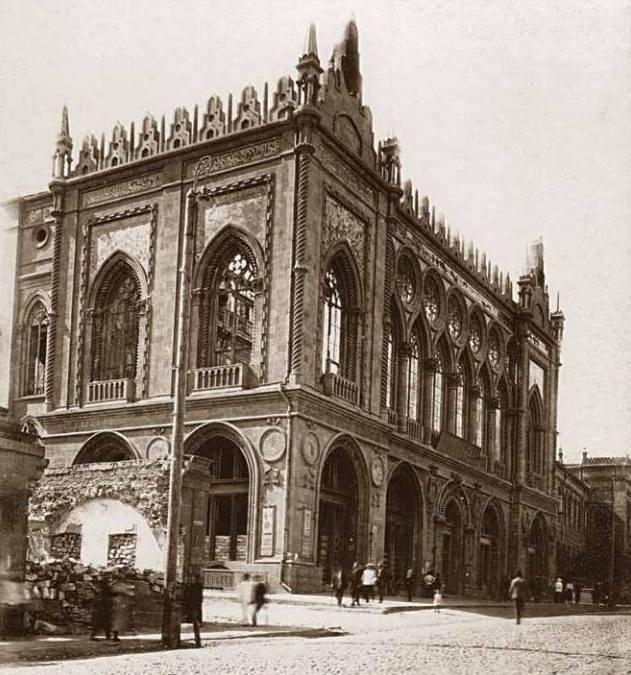 The first room, in which along the whole length of the wall there were apparatuses equipped with large lamps, was the central point of the city broadcasting network.
The first room, in which along the whole length of the wall there were apparatuses equipped with large lamps, was the central point of the city broadcasting network.
The second room served as the entrance to the studio. Here, guests invited on the air were waiting for their turn. To the left of the room there was a small cabin, in which a small window was opened for viewing and managing the studio. Inside the usual suitcase located in front of the window was an apparatus connecting a studio microphone on the one hand and a transmission line on the other.
In the third room there was the studio with the floor covered with Turkmen carpets and the walls covered with dark velvet. In the upper part of the room, there was a cube-shaped microphone on the table. In the middle of the studio there was the “Steinway” grand piano and chairs all along the wall.
On the left side of the studio entrance there was a small room where a director, an accountant, and a typewriter were sitting. The director, with the help of the B-4 type radio receiver, was checking the technical quality of the radio programmes.
Radio status
On April 22, 1925, the Council of People's Commissars of Azerbaijan made a decision to build a 600-meter wide-range broadcasting radio station in Baku.
On May 13, 1928, the Council of People's Commissars of Azerbaijan approved the Radio Regulations.
In April 1932 the Broadcasting Authority was released from the subordination to the Central Executive Committee and transferred to the Council of People's Commissars of Azerbaijan.
On July 5, 1932, the Central Executive Committee adopted a decree to establish the Central Broadcasting Committee.
On May 5, 1933, the Committee on Radioification and Broadcasting was created under the Council of People's Commissars of Azerbaijan.
In August 1939 the Committee on Radioification and Broadcasting was transformed into the Radio Information Committee.
In 1953 the Radio Information Committee was subordinated to the Ministry of Culture and was renamed the Radio Information Office of the Ministry of Culture.
In 1957 the Radio Information Office and the Baku Television Studio were merged, and the Radio and Television Committee was created under the Council of Ministers of the Azerbaijan SSR.
In 1970 the State Radio and Television Committee was established.
In 1991 the State Television and Radio Broadcasting Committee became a company.
By President Ilham Aliyev's decree dated 2005 Azerbaijan Television and Radio Broadcasting Closed Joint-Stock Company was established on the basis of the State Television and Radio Broadcasting Company.
From RV-47 to international broadcasting
In the first period, the programmes were broadcasted via RV-47 stations that were considered weak. It used to take 3 days to prepare an hour programme outside the studio.
After the radio station moved to the building of the Main Baku Post and Telegraph Office in 1929, the working conditions of the radio staff improved, gramophone devices were used on the air, microphones and amplifiers were improved. By the end of the same year RV-8 station had been put into operation. After that, the form and content of broadcasts and programmes on the air began to change.
If in the 1920-25s only one station with a capacity of 10 kW worked in Baku, then one year after the launch of radio, already 110 stationary and 36 mobile radio stations operated in the republic. If in 1930 the country had only 269 radio stations, then by the end of 1932 their number had increased to 20,409. By that time, radio, which had already appeared in residents' apartments and job clubs, had played its irreplaceable role in the development of culture.
In 1933 the daily broadcasts time of the Azerbaijan Radio reached 8.5 hours. Improvement of technical equipment of that period enabled residents of remote villages and regions of Azerbaijan to listen to the radio.
With the launch of a 35-kW new radio station in Baku in 1936 broadcasts of Azerbaijan Radio were heard in the Caucasus, Uzbekistan, Turkmenistan, and even on the eastern shores of the Black Sea.
By the end of 1940 the number of radio stations in the country had reached 51,000. Local editorial offices of radio broadcasts started operating in 32 regions.
In November 1960 the Baku-Agstafa radiorelearing line was launched.
In 1961 transmitting stations were launched in Ganja, Goychay and Shusha.
Pioneers
Initially, the Baku studio was broadcasting its programmes for an hour. A month later, the volume of these programmes reached 3 hours.
Programmes and concerts were broadcasted in the Azerbaijani, Russian and Armenian languages. The daily programme was organized by Verle, the first director of radio.
In the studios, mostly the main articles of party newspapers, conferences, congresses were read, concert programmes, performances of singers, announcements were broadcasted, and important events in the art and literature of our country were highlighted in programmes.
Publicistic and literary and dramatic programmes of radio has played a major role in the protection and development of the Azerbaijani language. Once a week, at 9 pm, well-known poets spoke in front of the microphone. Such programmes as Fire of Satire, Responsibilities of Literature, For a New Life and Radio Hour sounded on the air.
With the help of a large loudspeaker installed on the second floor of the building, whose windows looked out onto the kindergarten named after M.A. Sabir, the sound of radio was spreading over the surrounding streets. A lot of people had always gathered in the kindergarten named after M.A. Sabir, and those who could not find a free bench listened to the concerts standing.
The meeting with Maksim Gorky, who visited Baku in 1928, was broadcasted on the radio from the big hall of the Academy of Sciences, and country’s residents were able to listen to the presentation of writer.
Culture and arts workers of Azerbaijan actively participated in the preparation of the first programmes. The authors of feature and musical programmes were Uzeyir Hajibeyli, Muslim Magomayev, Mammad Said Ordubadi, Jafar Jabbarly, Samad Vurgun, Huseyngulu Sarabskiy, Bulbul, Mustafa Mardanov and others.
In 1927 the process of recruiting new personnel began on the radio. In the middle of the same year, Zulfugar Hajibeyli was appointed Director of Radio for Eastern music, and Presman – Director of Radio for Western music. Groups of actors and broadcasters were formed.
The first announcers of Azerbaijan
The first radio announcer was Ismail Alibekov, a student of Azerbaijan State Polytechnic Institute, and the first Azerbaijani woman announcer was Raya Imanzadeh, a student of the Law and Economics Faculty of Azerbaijan State University.
In September 1927 Ismail Alibekov was appointed the chief director. In 1928 Raya Imanzadeh and Enver Hasanov, a member of Azerbaijan State Youth Theatre, began to work as radio announcers.
At the next stage of Azerbaijan Radio development, a new generation of professional announcers has grown, such as Fatma Jabbarova, Zuleikha Hajiyeva, Gultakin Jabbarly, Aidyn Garadaghly, Sabutay Kuliyev, Ramiz Mustafayev.
The leadership of Muslim Magomayev
In October 1929 the famous composer Muslim Magomayev was appointed musical director of Baku Radio. In those days, Azerbaijan Radio broadcasts began with the radio march RV-8 by Muslim Magomayev. This famous work was dedicated to radio station RV, launched in 1929. The march was first played in this studio.
In 1932 in Radio Committee Muslim Magomayev together with Uzeir Hajibeyli were able to create the First Musical Orchestra of Oriental Instruments. The creation of this orchestra made a profound impact on the development of musical radio programmes. Several years later, it was this orchestra due to which the majority of composers and musicians, such as Niyazi, Fikret Amirov, Said Rustamov, Ashraf Abbasov, Agabaji Rzayeva, Jahangir Jahangirov, Suleyman Aleskerov, Nariman Azimov started their creative career in radio.
Such well-known arts workers of that time as Jabbar Garyagdyoglu, Alesker Abdullayev, Magomed Kechechi ogly, Said Shushynski, Guseynaga Gajybababekov, Guseyngulu Sarabski, Bulbul, Gurban Pirimov, Niyazi, Saltanat Gajar, Zulfu Adygozalov, Zulfugar Sariyev, Alovset Sadygov, Yaver Kalenterli, Jahan Talyshynskaya, Javahir Firudinbeyli, Akhmed Bakihanov, Bahram Mansurov, Teyub Damirov, Akhad Aliyev and Azerbaijan State Opera and Ballet Theatre orchestra.
On the initiative of Muslim Magomayev on March 4, 1993, at 8 pm, mugham concert was organized under the title Chahargaha Evening on the radio. On the concert the following performers took place: singers Jabbar Garyagdyoglu, Meshedi Bilal, artists Huseyngulu Sarabski, Zulfi Adygozalov, Yaver Kelenterli, Zulfugar Sariyev, tari players Gurban Pirimov, Akhmed Bakykhanov, Bahram Mansurov, Khosrov Melikov, kamancha players Gylman Salakhov, Hafiz Mirzaliev, and others.
It is Muslim Magomayev who hired Huseyngulu Sarabski, Huseynaga Hadjibababekov, Yaver and Munevver Kelenterli, Zulfugar Saryev, Alovsat Sadygov, Bike Samedzadeh on radio. He tried to improve radio by its broadcasting better music works. After studying 400 pieces of music, received on the radio, only 100 remained. Magomayev did not forget to order composers new songs and works.
Radio and Mammad Said Ordubadi
Mammad Said Ordubadi, who was the head of editorial staff of Literature Programmes, along with poems, stories, satirical articles, wrote spectacles for radio. The writer, whom everybody called “Mirze” with great love, distributed roles for actors and broadcasters in advance. In June 1931 on the initiative of Ordubadi, drama group of announcers was organized, whose activists became Soltan Najafov, Leyla Teregulova, Maryam Khudaverdiyeva, Hayat Musayeva, Elena Orbeliani and Nina Petrova.
Muslum Magomayev composed music for the scenes. Mammad Said Ordubadi's April Bride, Banknote, Shepherds, Room 6, Soltan Najafov's Parasites-suppliers, Rot Front, Fast – Will Be Accepted! and Religion Traders were broadcasted.
M.S. Ordubadi having attracted to radio such poets and prose writers as Jafar Jabbaly, Huseyn Javid, Jalil Mammadguluzadeh, Mikhail Mushvig, Said Huseyn, Samad Vurgun, Suleyman Vurgun, Mammad Rahim, Mekhdi Huseyn, Sabit Rakhman, Mir Jalal Pashayev, achieved frequent replenishment of the air with new works. In the late 20s one third of all radio programmes were feature programmes.
During the period of the radio activity, playing on air of the works of prominent poets and writers, such as M.A. Sabir, N. Hadjibeyli, J. Mammadguluzadeh, Y.V. Chamanzaminli, M.Mushfig, H. Javid, S. Huseyn, A. Javad, M.C. Pashayev, S. Vurgun, M. Huseyn, R. Rza, The art of S. Rahman, I. Efendiyev, B.Vahabzadeh, I.Shykhly, S.Dagly, S.Gadirzadeh, I.Huseynov, Anar, Elchin, H. Seyidbeyli, I. Gasymov, I. Melikzadeh and others, has had a significant influence on the development of literary language and protection against foreign influence.
“Radiotheatre”
In 1931 a Radio Theater was created on Azerbaijan Radio under the guidance of director Mustafa Mardanov. The process of adaptation of the Azerbaijan Theater to the radio contributed to the expansion of the creative capabilities of the actors. Talented stage masters Abbas Mirza Sharifzadeh, Mirazaga Aliyev, Kazym Ziya, Ulvi Rajab, Marziya Davudova, Fatma Gadri, Sidgi Ruhulla, Mustafa Mardanov charmed radio listeners with their performances.
In December 1931 H. Javidin's Sheikh Sanan play was broadcasted on the radio for the first time. After a while the plays Boris Godunov by A.S. Pushkin, The Dead by Jalil Mammadguluzadeh, Aidyn, In 1905, Yashar, Sevil by D. Jabbarly, Hamlet by W. Shakespeare, Haji Hara by M.F. Akhundov, The Ruined Nest by A. Khagverdiev were presented to the audience. These were the first radio plays on the air.
The application of the magnetic tape technology in 1953 opened a new stage in the development of production process of Radiotheater. During this period, the edited plays Khanlar by Samad Vurgun, Spring Waters by I. Efendiyev, Morning of the East by A. Mammadkhanly, Dawn Over the Caspian Sea by I. Gasymov were broadcasted on air. After a while, the repertoire of Azerbaijan Radio was replenished with such works as Diamond and In 1905 by D. Jabbarly, Bahadur and Sona by N. Narimanov, Mehman by S. Rahimov, Sword and Feather by M.S. Ordubadi, Inspector by N. Gogol, Woe from Wit by A. Griboedov, Eugene Onegin A.S. Pushkin, William Tell by I. Schiller, The Bride of Abydos by D. Byron. Productions of musical comedies Arshyn Mal Alan, 'Not That, Then This' by Uzeyir Hajibeyli and the work Skull by N. Hikmet aroused emotional outburst. And in 1958 Mehdi Mammadov improved the spectacle in accordance with the radio requirements. A galaxy of directors has grown who staged radio plays – Aligeydar Alekperov, Tofig Kazymov, Tofig Ismailov, Hasan Abluch, Azerpasha Nematov, Rovshan Abdullayev, Nazim Yuzbashov, and others.
The 30s
In 1932 reading of newspaper articles on the radio was canceled and The Latest News programme began to air. In October of the same year Information editorial staff was created.
After structural changes in 1935, the editorial staff of Literary and Dramatic Programmes, Radio of the Collective Farmer, The Soldier of the Red Army, and The Youth began to function on the radio.
From March 23 to April 6, 1936, in the Soviet Union International Radio festival was held for the first time. It was the largest Radio festival in the USSR, in which musical programmes were played in 28 languages. Baku Radio contacting with Moscow was broadcasting this cultural event during 3 hours. Azerbaijan Radio programme, prepared for the festival, mainly consisted of the works of Uzeir Hajibeyli and Muslim Magomayev. The performances of women oriental instrumental orchestra Palace of Free Turkic Women and mugham Shahnaz, sung by Huseynaga Hajibababekov and accompanied by tari player Gurban Pirimov, were also included in the programme.
In 1937 the festivals of national creativity were held in 12 regions of our Republic. The final concerts of the Radio Festival were broadcasted live from 5 regions.
The opening of the first session of the Supreme Council of the Azerbaijan SSR on July 18, 1938, was also broadcasted live.
The public-political processes in the mid-30s, also had influenced on radio. The Soviet regime used radio as “speaking voice” as a mean of propaganda either against “class enemies” or “people’s enemies”. The fear was both in society and in radio. The works of poets and writers, such as G. Javid, M. Mushfig, S. Huseyn, A. Javad, A.M. Sharifzadeh, U. Rajab did not exist in the radio. Journalists and radio workers tried to be cautious in their actions and conversations.
The Second World War period
In spite of the fact that Baku located far from a war zone, during the Second World War Azerbaijan Radio functioned in extremely tense conditions. On the night of June 22, 1941, the announcer Zakhra Salayeva informed the audience about the beginning of the war from a dark room in the basement.
Radio employees turned the microphone into a weapon against fascism: the radio releases were prepared in a very short time, broadcasts had been recorded and edited day and night without interruption. During this period, the number of newscasts increased, and the broadcasts volume of Azerbaijan Radio reached 5 hours. The main burden lay on the editorial board of The Latest News: essential information, government decrees were translated into the Azerbaijani language and transmitted to the listeners within 30 minutes. Favorite programme of the difficult war period was Azerbaijan for the Front. This broadcast had sounded on the air regularly until the day of victory. Among the broadcasts that radio journalists prepared for the listeners were not only news and dramatic programmes, but also broadcasts of a comforting nature and strengthening listeners morally. On air there patriotic plays and thematic recordings were broadcast for the listeners.
It is no coincidence that, taking into account a big role of radio in socio-political, cultural life and in the struggle against fascism, May 7 was declared Radio Day by the special decree of the leadership of the USSR. This holiday had been celebrated in Azerbaijan for many years. But the real holiday of Azerbaijan Radio has begun to be celebrated since 1992. After our country gained independence, November 6 was declared Professional Day of Azerbaijan Television and Radio workers.
Azerbaijan Radio employees, who had been working unselfishly in the 1941-1945s, could not even imagine that in 45 years they would face the real Patriotic war, and that they would daily broadcast messages of the Ministry of Defense from the Karabakh front, that they would have to transmit to their people the bitter news about the occupation of Khankendi, Shusha, Lachin, Kelbajar, Fizuli, Agdam, Gubadly, Jabrail and Zangilan, about the horrors of the Khojaly genocide. Exactly 45 years later, on January 20, 1990, the Soviet Army, which had been once praised and promoted by Azerbaijani journalists, went to the unarmed sons and daughters of the Azerbaijani people and poured their innocent blood over the streets of our capital Baku, which during the Second World War had supplied the whole USSR with oil.
International activities
In 1941 the USSR government considered radio broadcasting in Turkey and Iran appropriate. In July of the same year, Azerbaijan Radio created two editorial offices that were preparing programmes in the Turkish and Persian languages. Adil Efendiyev became the head of the Turkish editorial staff, and Gulam Mammadli was the head of the Persian editorial staff for a short period of time.
On July 20, 1941, test programmes including the expressions "Here is Baku" and "Voice of Baku" were first broadcasted on the radio.
Since August 18, 1941, these programmes under the slogan "Voice of Baku" had been regularly broadcasted around the world.
In that period, the contribution to the development of international radio broadcasting was made by the following writers, journalists and orientalists: Mammad Said Ordubadi, Mikhail Rafili, Jafar Khandan, Gulam Mammadli, Adil Efendiyev, Latif Kerimov, Mubariz Alizadeh, Alesker Mammadov, Abbas Gulmammadov, Jafar Hajiyev, Jabbar Majnunbeyov, Jabbar Jabbarov, Fazil Babayev, Mina Bayramova, Sharif Valiyev, and others. These radio programmes were broadcasting to the population in Iran and Turkey the news of the Soviet Information Bureau, and the speeches of the intelligentsia.
In 1950 on the basis of the Turkish and Iran editorial offices the main editorial staff of Foreign Broadcasting was created. Since 1951 the editorial staff, which every day was broadcasting programmes in the Azerbaijani language for an hour for our compatriots abroad, had joined Foreign Broadcasting editorial staff. In the 50s this chief editorial board had been led by Mukhtar Hajiyev.
In 1959 Azerbaijan Radio started broadcasting programmes in Arabic. The announcer of Bagdad Radio Sinan Said, Turkmen of Iraqi descent, was invited for the position of the announcer to this editorial office. In a short time, this editorial staff turned into a success in a number of Arab countries, and many letters of thanks began to arrive at this editorial office.
Since 1974 the head of radio and Foreign Broadcasting department became the famous writer and journalist Agshyn Babayev. Editor-in-Chief of Foreign Programmes was Kerim Akhundov, and the Programme Director – Eldar Aliyev.
Since January 1, 1976, the editorial boards' status had raised, and they all became independent.
Since March 1, 1980, the department, which prepared for Iran programmes in Azerbaijani, became chief independent editorial board.
In the 80s the daily broadcasting time of Azerbaijan programmes abroad was 2 hours 15 minutes in the Persian language, 2 hours – in Turkish, 1 hour – in Arabic, and also 1 hour in Azerbaijani for compatriots abroad.
In 1986 the volume of Persian programmes decreased to 1 hour, and the volume of Azerbaijan programmes increased to 2 hours 45 minutes.
Such programme as Mother tongue, Bridge, Mood, ‘Elin Sazı, Elin Sözü’ (Saz of nation, word of nation) were popular among our compatriots.
A half-hour programme Mother Tongue taught our compatriots in Iran the Azerbaijani language, its grammar, and oral speech. Bridge programme was prepared on the basis of letters, phone calls, and interviews with guests of the studio. This programme facilitated the reunion of many relatives after a long separation.
On November 26, 1992, International Azerbaijan Radio was established. International Radio prepared programmes in English, German, French, Russian, Armenian, Talysh, Kurdish, Lezgi and Georgian. For one period, International Radio was broadcasting worldwide on medium and short waves a ten-hour programme about our independent country in 8 languages every day.
In the 1992-1993s Vagif Bayatly had been Director of International Radio. Then, Cherkez Bagirov was appointed for this post. Since 1996 Jahangir Bagirov had become the head of International Radio.
In 2007 Western Programmes, which were broadcasted in German, French, and English were cancelled.
At present, International Radio daily broadcasts programmes on medium and short waves in Azerbaijani for 5 hours, in Russian, Armenian, Persian, Turkish and Arabic for 1 hour, in Georgian for 20 minutes 3 times per week, in Talysh, Kurdish and Lezgi for 15 minutes 2 times a week.
Post-war period (1945-1970)
After the war certain changes were made in the form and content of radio broadcasts. Since 1949 the use of electromagnetic recording technique on the radio had helped to expand capabilities and improve the quality of the broadcasts.
In 1949 the basis of football reportages was laid on the radio. The first reportage was realized by sports observer Alexandr Gnezdov. It was only 7 years later, in 1956, when the football game from the Republican stadium was, for the first time, commented in the Azerbaijani language by Sabutay Guliyev.
The Second Programme, created in 1951, expanded the activities of the national radio.
In 1956 the 30th anniversary of Azerbaijan Radio was celebrated. By that time, 19 hours of broadcasts in Azerbaijani, Russian and Armenian were broadcasted every day from Baku. Among radio broadcasts the preference was given to socio-political, literary, musical, industrial, agricultural, children and youth programmes. Every day 12-15 concert programmes sounded on the air.
With the beginning of the television activity since 1956, the radio has had to compete with it. Radio has enriched its fund with means of folk and songs of composers, as well as literary works. During this period, Said Rustamov was leading the folk instruments orchestra, such composers as Haji Khanmammadov, Gambar Huseynli, Nariman Azimov cooperated with this orchestra.
In the mid-60s the appearance of chamber and variety orchestra on the radio and television and “Gaya” vocal quartet expanded radio capabilities for folk, variety, and symphonic music distribution.
In the mid-70s the audience was especially fond of the following programmes: Good Morning, Evening Meetings, Stream, Natavan girls' club, From the Lyrical Notebook, Mugham Time, Desire Music Mail, The Writer and the Time, The Song Walks Around the City, and Theater in Front of the Microphone.
The Golden Fund
The Golden Fund of the radio stores mughams, songs of composers, rare pieces of various operas and spectacles performed by outstanding artists.
In 1968 in record library included about 24,000 records of musical works and of other types were stored on tapes, in 1980 their number reached more than 40,000.
Record library stores recordings of Uzeyir Hajibeyli, Muslim Magomayev (grandfather), Jafar Jabbarly, Samad Vurgun, Jabbar Garyagdyoglu, Said and Khan Shushynski, Niyazi, Alovsat Sadygov, Huseynaga Hajibababekov, Rashid Beybutov, Shovkat Alekperova, Sara Gadimova, Rubaba Muradova, Gulaga Mammadov, Tukazban Ismaylova, Zeynab Khanlarova, Hajibaba Huseynova, Alibaba Mammadov, Arif Babayev, Islam Rzayev, Nazaket Mammadova, Baba Mirzoyev, Muslim Magomayev (grandson), Polad Bulbul ogly, Mirza Babayev, Vagif Mustafazadeh, Rafig Babayev, Flora Kerimova, Akif Islamzadeh, and others.
The performances of prominent masters of the arts stored in the Golden Fund demonstrate the perfection of our literary language. Famous stage masters, such as Mirzaga Aliyev, Marziya Davudova, Alesker Alekperov, Hokuma Gurbanova, Fatma Gadri, Ismayil Hidayatzadeh, Rza Tahmasib, Mustafa Mardanov, Ajdar Sultanov, Agadadash Gurbanov, Mohsun Sanani, Hasanag Salayev, Mammadrza Sheykhzamanov, Ali Zeynalov, Suleyman Tagizadeh, Mehdi Mammadov, Leyla Badirbeyli, Barat Shekinskaya, Hasanaga Turabov, Samandar Rzayev, Mahluga Sadyhova, Hamlet Gurbanov, Shafiga Mammadova, Hamlet Khanyzadeh, Vafa Fatullayeva, Amaliya Panahova, Aliabbas Kadyrov, Mikhail Mirza, Amina Yusifkyzy, Hasan Abluch and others, not only pleased the audience with their performances, but also instilled in them the correct colloquial speech.
The recordings of Gorky's work Grandfather Arkhip and Lenka, Samad Vurgun’s Vagif performed by Alesker Alekperov, as well as Meshedi Ibad performed by Mirza Agha Aliyev, Gurbanali Bey works performed by Mustafa Mardanov are considered the main value of the Golden Fund. There is even a variant of the work Vagif by Samad Vurgun written in the Armenian language.
The appearance of Radio Araz
On October 15, 1964, for the first time, the news and music programme Araz of Azerbaijan Radio went on the air. An introductory music for Araz was written by Fikret Amirov. At first, Araz was broadcasting for 12 hours. After a while some broadcasts of the first radio programme were re-broadcasted by Araz.
The significant role in the creation and activity of Araz Radio was played by Teymur Aliyev, Anvar Alibeyli, Sabir Akhundov, Soltan Najafov, Kamil Mammadov, Haji Hajiyev, Aydyn Garadagly, Valid Sanani, Yalchin Alizadeh, Ilyas Adygozalov, Hidayat Safarli and others.
To ensure the flexibility of information programmes, the names and structure of news releases of the first programmes have changed. From July 13, 1966, Newscast began to air under the title Voice of the Day. Since 1968, the News editorial staff had daily transmitted 24 broadcasts to the first programme and the Araz programme.
During the years of independence, Azerbaijan Radio made a decision to turn Araz programme into an independent structure. In November 1993 two editorial offices were formed on its basis: Information and Socio-political Programmes and editorial staff of Folk Art. However, this structure was cancelled in December 1998.
The chaos that began in 1988
Since the beginning of the Karabakh conflict in 1988, radio, as well as television, has advocated for the interests of the people of Azerbaijan, which was manifested in January 1990.
The Soviet empire tried to suppress not only the people, but also Azerbaijan Radio. Along with the energy block of the television having unexpectedly blown up, employees of the Azerbaijan Radio were also removed from the air. There was a military censor on the radio. The country was in mourning, and information far from reality was broadcasted.
However, in those terrible days, editorial staff of Foreign Broadcasting of Azerbaijan Radio managed to broadcast to the world all the details of tragedy on January 20. On January 20 Elmira Gafarova, the chairman of the Supreme Soviet of the Azerbaijan SSR, together with her assistant, having unexpectedly come on the radio, made statements on the air in the Azerbaijani and Russian languages. She declared that all the responsibility for the innocently shed blood, for the tragic death of sons and daughters of Azerbaijani people rests with the leadership and bodies of the USSR, the guilty would not be forgiven. Referring to this statement, a message was compiled, which was aired on January 21, and technicians managed to record it on tape and subsequently broadcast it several times. The editorial staff of Foreign Broadcasting, with the help of radio of Arab countries, Tabriz and Tehran radio of Iran, as well as radio of Ankara in Turkey, conveyed this statement to the whole world. The Editorial Office broadcasts this statement to all over the world through Arabian countries, Iran's Tehran, Tabriz and Ankara. Military commandant, "well settled" in Baku, forgot that the International radio could broadcast abroad.
The period of independence
Gaining independence in 1991 radically changed the tasks of radio. The air of democracy began to be felt in radio broadcasts, preference was given to programmes in which there was open and frequent contact with society.
The radio daily broadcast the reports from the Ministry of Defense about battles with Armenian occupiers for the liberation of Karabakh. In order to enhance the sense of patriotism in the audience, special broadcasts were prepared, such as Without Secrets, Khudaferin, By the Way, From the Angle of View, World, Stair, Environment, Radio Message, Molla Nasreddin, Way, Nest, Time, Dawn, and military marches were also broadcast.
The events taking place in Ganja in 1993, the invitation of the great leader Heydar Aliyev from Nakhchivan to Baku, live transmissions from National Assembly sessions, the signing of the Contract of the Century in September 1994 – all this information was directly broadcasted to the world by the radio.
The emergence of private radio channels during the period of independence, their activity on FM waves increased the competition for Azerbaijan Radio and contributed to the "fragmentation" of its listener, its role in contributing to the preservation and purity of our literary language cannot be denied. Despite private channels’ broadcasts being dynamical and diverse, Azerbaijan Radio at first glance seemed to follow conservative traditions. The development of information technologies in all spheres of life has made inevitable the process of transformation of innovations into the technology, production and creative activity of Azerbaijan Radio. Currently, Azerbaijan Radio has entered a new stage of its development. The new approach, dynamism and modernization in all airtime is clearly felt.
The main broadcasts of Azerbaijan Radio to date are:
Retro mania – (live) about popular retro songs, their appearance, the cover version, and the conversation with a guest of the programme about songs of past years and modernity.
Thought Form – about the youth’ way of thinking, their outlook and approach diversity.
From Word to Word - (live) about literature, talents for words.
Famous Jazzmen – about the creativity of world jazzmen.
Our Address Is Azerbaijan – highlights the lives of our compatriots abroad, their business and activity in the diaspora and lobby.
The First – about compatriots life and activity, who distinguished themselves in inventing and making discovery of something previously unknown.
That Village Is Our’s – about our historical lands on the territory of Armenia.
Thinking – memories about the past with studio guests.
Heart-to-Heart Talks – pleasant conversations with the famous figures of science and art.
Ask, We Answer – (live) the response to social questions regarding pensions and monetary compensation for the needy. The latest news in social sphere.
Behind the Scenes – (live) the discussion about interesting moments during films shootings that left behind the scenes.
Woman's Voice – (live) covers the activity of women who are successful in all spheres of life.
Come, My Morning - (live) about relevant questions, themes relating to the present day. Victories are organized.
Fountain – it combines the historical values of the past and collects folklore, thanks to which had been popular with listeners for many years. A kind of scientific journalism, philosophy and a psychological approach to the topics covered creates the basis for the "Fountain" genre.
Homeland, Live – about love to homeland, the defense of fatherland.
From Military History – about the life of military commanders whose names are forever imprinted in the history of the country.
Soldier Of Azerbaijan – dedicated to military sons of our country.
Extra Time – (live) the discussions with professionals about the most relevant sports themes.
Green Planet – covers current ecological issues. Encourages people to love and protect nature.
Sweet Dreams – bedtime fairy tale for children.
The World Today – the programme discusses socio-political events.
ADMINISTRATION
Rovshan Ragif ogly Mammadov
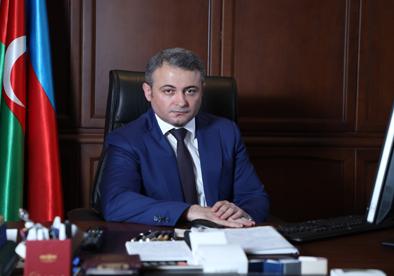
Rovshan Ragif ogly Mammadov was born on June 15, 1979, in Aghstafa region of the Republic of Azerbaijan. In 2000 he received bachelor's degree in Faculty of Journalism from Baku State University and in 2002 earned master’s degree in international journalism in Faculty of Journalism from BSU.
In 2006 R.R. Mammadov received PhD in philosophy at the Department of Theory and Practice of Journalism in the Faculty of Journalism from Baku State University.
In 2016 R.R. Mammadov received a doctorate degree in philological sciences, having defended his doctoral dissertation on the thesis Press of the Azerbaijani Diaspora in Europe During the Period of Independence and Issues of National Ideology (Germany, France, Turkey, England) at the Department of Philology and Journalism at Baku Slavic University. Being the author of 3 books, R.R. Mammadov has published more than 40 scientific articles both in Azerbaijani and in different languages abroad.
R.R. Mammadov at different times was engaged in pedagogical activities at Baku Slavic University, Baku Eurasian University, at Azerbaijan University, and at present – at the Academy of Public Administration under the President of the Republic of Azerbaijan.
Continuing journalistic activities, Rovshan Mammadov had held various positions on Leader channel for a long time. In 2010 he was the head of the Sports department of this channel.
Since 2015 R.R. Mammadov had been the host of such programmes as Pulse of the Day, Main Task and Week on Azerbaijan Television (AzTV). Then he was appointed director of the Socio-Political Programmes and Foreign News studio of CJSC Azerbaijan Television and Radio Broadcasting. On January 15, 2019, he was appointed deputy chairman and served as chairman of Closed Joint-Stock Company Azerbaijan Television and Radio Broadcasting.
R.R. Mammadov was awarded the Taraggi Medal for his services in the development of the mass media in the Republic of Azerbaijan by the decree of President of the Republic of Azerbaijan Ilham Aliyev dated July 20, 2015, and the “100th anniversary of Heydar Aliyev (1923-2023)” jubilee medal by the decree dated February 2, 2024.
By decree of the President of the Republic of Azerbaijan dated September 4, 2019, R.R. Mammadov was appointed chairman of CJSC Azerbaijan Television and Radio Broadcasting.
R.R. Mammadov speaks Russian and English.
He is married and has two children.
Rufat Zeynalabdin Hamzayev
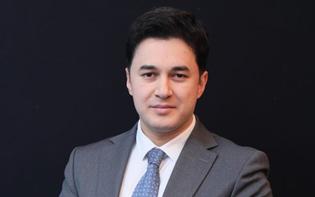
Rufat Zeynalabdin Hamzayev was born in Baku city on September 15, 1986. He finished English-oriented school No 7.
In 2004-2008, he did a bachelor’s degree at Baku State University. After completing the military service, in 2009-2011, he did a master’s degree at this higher education institution.
In 2019-2022, he graduated with honors from the Academy of Public Administration under the President of Azerbaijan, in the field of International Relations.
Since 2009, he has worked in various media outlets. In 2010, he started working on AzTV after being selected through the contest. In 2012-2015, he worked as the editor-in-chief of AzTV’s Public-Political Programs Department. Since 2019, he has worked as the director of the "News" Information Programs Studio. During his activity in the media, he has been remembered by taking exclusive interviews from the world’s political and religious leaders, public figures (Georgian President Salome Zurabishvili, OPEC Secretary General M. Barkindo, Patriarch of Moscow and All Rus Kirill and others), making reportages from the epicenter of events of public-political significance ("April victory", "Gunnut operation", IV Islamic Solidarity Games, Formula 1 and others). He is the author of "Human challenge" (2017), "Industry: historical customs in the new reality" (2014), "The people’s party. YAP" (2019), "Code name: NALYOTCHIK" (2020), "Page 145" (2020), The father's will" (2020), "Mehdi Huseyn street, 1" (2021), "The President. The Inimitable Diplomacy" (2021), “The Plan of the General” (2023), "-28, +4466" (2023), "THE PRESIDENT. Restoration of sovereignty" (2023) and other documentaries. He was the presenter of "The Pulse of the Day" analytical-information program.
Within the framework of the “Year of Heydar Aliyev”, he was a screenwriter and host of the “Confidential” project, dedicated to the activities of National leader in the security agencies. In the documentaries "Naturalist" (2023), "Port Pahlavi" (2023), "Khankendi-1967" (2023) documents marked "top secret" about the operations in which he personally participated and led were used.
In accordance with the order of Azerbaijani President Ilham Aliyev dating February 24, 2020, he has been appointed the deputy chairman of "Azerbaijan Television and Radio Broadcasting" CJSC.
By order of the State Security Service of the Republic of Azerbaijan dated May 8, 2023, he was awarded the jubilee medal "100 years of state security and foreign intelligence agencies of the Republic of Azerbaijan (1919-2019)".
Currently, he is the presenter of the "Main topic" public-political talk show.
He speaks English, Russian and Arabic.
He is married and has one daughter.
Rafig Mahammad Hashimov
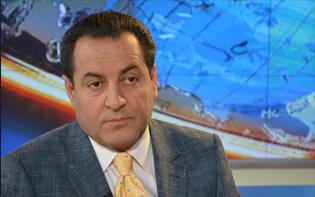
Rafig Mahammad Hashimov was born on August 11, 1966, in Ujar region’s Alikand village. In 1981, he finished the 8-year school in Absheron region’s Guzdak settlement.
In 1981-1985, he studied at Baku Communications Electro-Vocational Institution. After finishing the military service in the Soviet Army, in 1987, he started working as a technician in Azerbaijan State Teleradio Broadcasting Company. In 1990, he won the "Television anchor" contest and continued his activity as an anchor and a presenter. In 1997, he graduated from the Faculty of Journalism of Baku State University. He was the presenter of the "News" information program, various state events, the "XX century", different programs and "The Morning" program.
He taught speech culture on "Space", "Lider", "Khazar" TV channels, at Khazar University and the Teleradio Academy.
"The third face of the gramophone record" (1996), "A grain of sand" (1997), "The diary of the traveler" (2007), "Magister dixit" (1999), "The sun and cloud" (2000), "The light of my eye" (2002), "The dreams of the reed city" (2006) films have been shot based on his scripts. He is the director and scriptwriter of "Heydar Aliyev. The phenomenon of two centuries" (2003), "I call stars by your name" (2004), "Anchor" (2006), "Unfinished diary" (2011), "Sattar’s Azerbaijan" (2013), "The water of the Land of Fire" (2015), "Surgeon" documentaries.
His novels and essays, as well as his translations into Azerbaijani of the classics of the world literature, including Nobel Prize nominees Herman Hesse, Czeslaw Milosz. Jorge Luis Borges, have been published in the country’s newspapers and journals. Since 2008, he has been a member of Azerbaijan Writers Union.
In accordance with national leader Heydar Aliyev’s decree dated November 4, 1998, he was awarded the title of honorable artist of Azerbaijan Republic.
In accordance with Azerbaijani President Ilham Aliyev’s order dated February 24, 2020, he has been appointed the deputy chairman of "Azerbaijan Television and Radio Broadcasting" CJSC.
Currently, he is the author and presenter of "The XXI century" and "The Book Club" projects.
He is married and has two children.
AZERBAIJAN TELEVISION
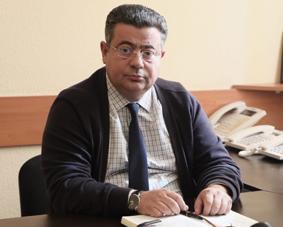
Emin Huseynov
Director
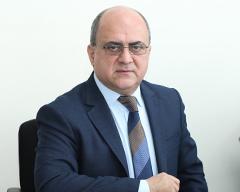
Veli Ekber
Director

Tofig Abbasov
Director
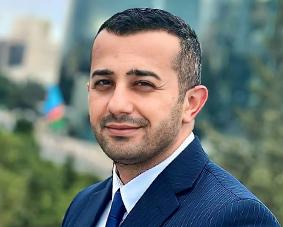
Turan Babayev
Editor-in-Chief
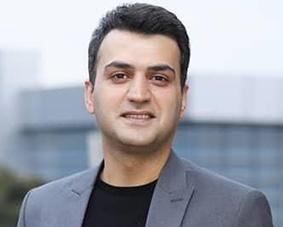
Hemid Asadzade
Director
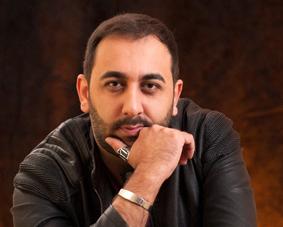
Elnur Gadirov
Editor-in-chief
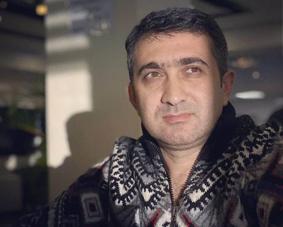
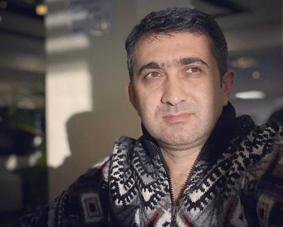
Elnur Mammadov
Editor-in-chief

Ramiz Hasanoghlu
Artistic Director
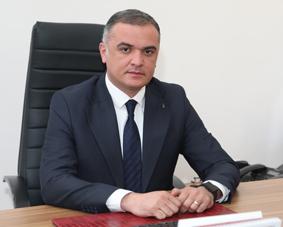
İbrahim Gurbanov
Editor-in-chief
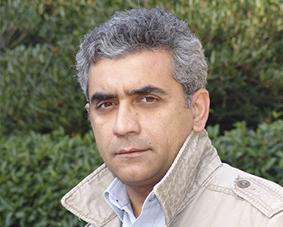
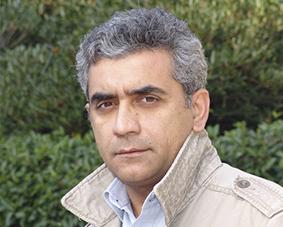
Elchin Guliyev
Director
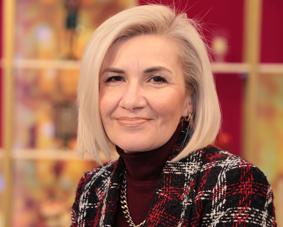
Nazila Babayeva
Chief Producer
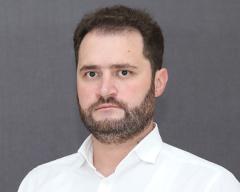
Cavad Tagızade
Director
AZERBAIJAN RADIO

Rovshan Ramazanli
Director
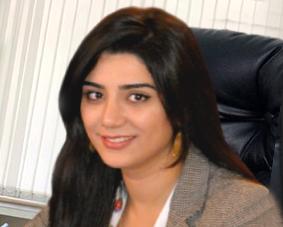
Aygul Mamedova
Head

Zaur Rzayev
Editor-in-Chief
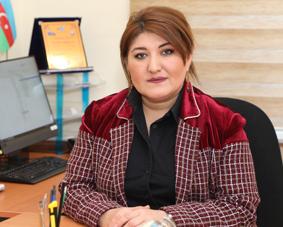
Hemidova Sitare
Editor-in-Chief
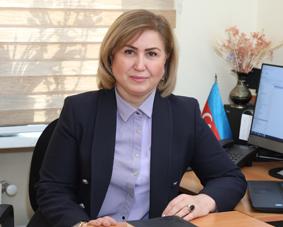
Dilshad Mirzoeva
Editor-in-Chief
RADIO INTERNATIONAL
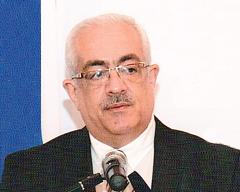
Ali Abas Guliyev
Director
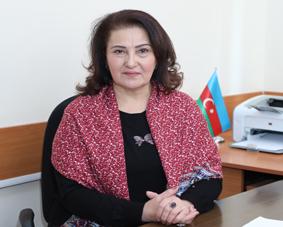
Natavan Atamaglanov
Head
DEPARTMENT
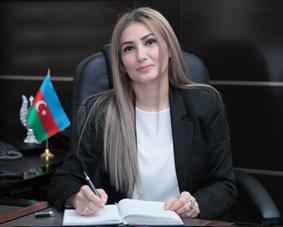
Ilhama Huseynova
Head
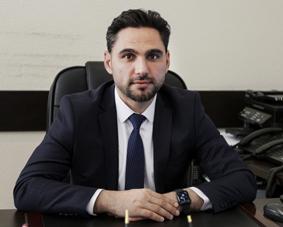
Elnur Alizade
Director
Tural Babayev
Head
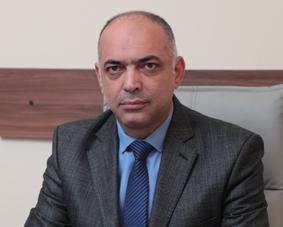

Zeynab Yunuslu
Head
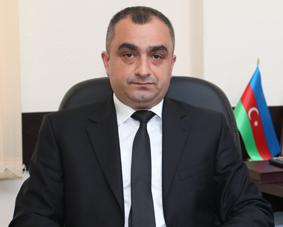
Emin Nagiyev
Head
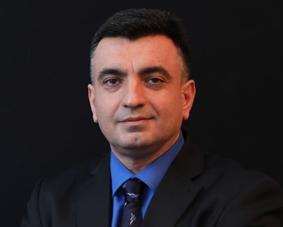

Elnar Mammadov
Head

Suleyman Mammadov
Head
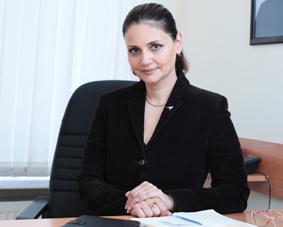

Rufat Seyidov
Head
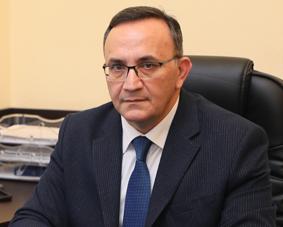
Elkhan Abbasov
Head
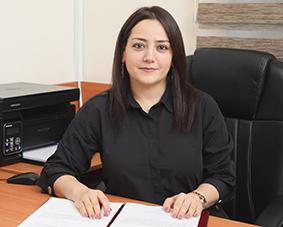
Tunzala Nuriyeva
Head
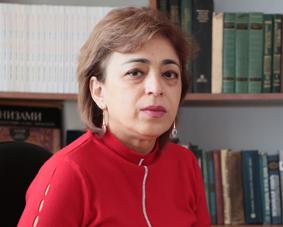
Kamala Rahimova
Director
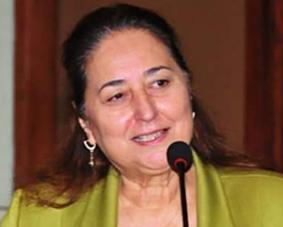
Telli Panah Aliyeva
Reсtor
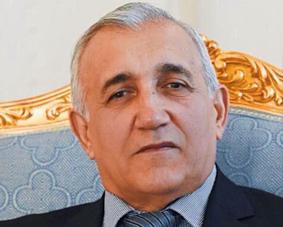
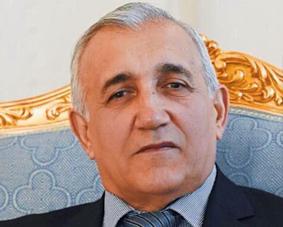
Fazil Hadiyev
Head
THE TRADE UNIONS COMMITTEE

Natavan Osmanli
Chairperson
EDITORIAL POLICY AND RULES OF PROFESSIONAL ETHICS
Respect for the truth and meeting society's need for information are the fundamental principles of journalism. A journalist working for the “Azerbaijan Television and Radio Broadcasting” CJSC (hereinafter referred to as the Company) bears public responsibility.
General principles
The society is guided by the following principles in the activity of television and radio:
- adhere to the principles of objectivity, accuracy, impartiality and honesty;
- the information should not be provided without clarification or assurance of its accuracy;
- there should be no bias in the presentation of facts and events;
- slander, insult and hatred should not be allowed;
- norms of the state language must be observed;
- journalists should refrain from using vulgar expressions and slang in their materials;
- television and radio policy can never contradict the statehood, national and moral values of the society, general morality and the principle of protection of the family;
- issues related to civil rights, solidarity, democracy, equal opportunities should be approached sensitively;
- television and radio should be interested in the protection of national and public interests, should not allow content that affects the religious beliefs and dignity of the people;
- the state symbols should be treated with respect;
- the propaganda of terrorism, violence, cruelty, national, racial, religious and sexual discrimination should not be allowed;
- actions contrary to the protection of health and the environment should not be promoted;
- freedom of information, transparency, objectivity, impartiality, fairness and pluralism must not be compromised;
- materials should be presented accurately and with as many different perspectives as possible;
- the journalist must not forget the mission of enlightenment, to develop this line in his activity;
- common critical thinking in relation to events should be based on the truth of the facts;
- violence, crime, other information on the safety of such people should be adequately disclosed, disseminated and unaffected;
- information, including images, that harms the physical, mental and spiritual development of vulnerable groups of the population, children and minors should not be used;
- requirements provided for in the Law of the Republic of Azerbaijan “On the protection of children from harmful information” should be taken into account in relation to children;
- the identity of the child must be kept confidential in the information about the sexual crime against the child;
- details related to people's race, color, religion, sexual orientation, physical, mental illness or disability should not be shown if they are not directly related to the topic;
- if necessary, appropriate age limit indicators should be applied to the distributed materials;
- propaganda of parapsychology and superstition should not be allowed;
- the description of the news about the suicide attempt should not evoke a sense of imitation, the subject should be treated with special sensitivity;
- the journalist must respect the right of the presumption of innocence of the person suspected of the crime.
News and commentary
- news and commentary should be distinguished, the source should be clearly presented;
- the journalist should not deviate from the basic rules of professional conduct and journalism in his commentary;
- when submitting the material to a non-television and radio author, at the end of the material, he / she should state in the form “the position of the author and the position of the television (radio) may not coincide”;
- the journalist should not distort the opinion he quotes;
- advertising materials should be distinguished from editorial and author's materials, and it should be specially noted that it is advertising;
- if the editorial assignment contradicts the law and professional ethics, the journalist may refuse to perform the assignment;
- If the journalist's opinion is distorted during editing, he / she may refuse to author the material.
Work with news sources
- work with transparent, credible, accurate sources should be preferred;
- should be kept confidential if he / she does not want to be identified due to the fact that he / she may harm the source's work or himself / herself;
- editors, along with correspondents, should have information about confidential sources in order to evaluate them. If the source wishes to remain completely confidential, the information provided may be disseminated only if it is of public interest and confirmed by other alternative sources;
- factual information should be clarified from at least two different and independent sources;
- a confidential source may be disclosed only at the request of the court;
- sources should be treated fairly, statements should not be taken out of context.
Denial and correction
The purpose of correcting errors in audiovisual and digital platforms, in print media, such as television and radio products, is to provide a quick response and to explain what is wrong and correct as clearly and quickly as possible. The user must be able to understand how and why the error was corrected;
Correction - If an article, photo, information, title, graphic element, video, or other material is substantiated, the change must be explained;
It should not delete the materials broadcast by television and radio, and if there is any information that has been overlooked or updated, it should be supplemented with appropriate additions;
In order to clarify the issues arising in connection with the principles and details of the refutation, reference should be made to the Law of the Republic of Azerbaijan “On Media”.
Copyright
- plagiarism and copyright infringement should not be allowed;
- it is important to refer when using the material of another media entity;
- the journalist must clearly distinguish between what he sees in the material and the information he receives from other sources;
- a journalist may not offer his / her material for television or radio to others without the consent of the management of the Society in which he / she works;
- in case of dispute, reference should be made to the articles of the Law on Copyright, as well as the Law on Media on Copyright Protection.
Journalist's behavior on social media
- The journalist must behave professionally when using social media, should not allow actions that could damage the reputation and position of the media subject he / she represents;
- When broadcasting audio, photo, video and other materials taken from social networks at a media organization, the interests of those, who are in the material, should be taken into account;
- Attention should be paid to the public importance of the information obtained from social networks and the status of the author, as well as the information should be clarified from additional sources;
- The journalist should not turn the unpublished material into a subject of discussion on social networks without the permission of the Company.
Professional ethics
Serious journalism does not exist outside media ethics. The norms of professional ethics include:
- In no case should a journalist accept a gift for professional activity;
- Invitations to events not open to the public should not be accepted;
- should not prepare material for another;
- It is prohibited to provide information that is protected as a public secret;
- should not make any obligations to the journalist aimed at restricting his / her professional activity;
- The relations between the creative team in the society, as well as between the management and employees should be formed in a healthy, legal and transparent manner;
- The journalist must adhere to the principles of professional solidarity;
- Employees working in television and radio must protect the reputation of the Company they represent in their behavior and activities outside the Company.
FINANCIAL REPORT
You can get familiarized with the text of the report in the "About" category of the Azerbaijani version of the website.












